Part Four
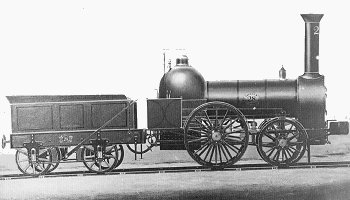
London and Birmingham Railway number 28.
Built by Edward Bury & Co. of Liverpool. |
Daniel and family would have had the excitement of
travelling by train, not only from Birmingham, but also from
Willenhall when the station opened before 1851.
|
|
When they were living in London they could have travelled on a
knifeboard omnibus such as the one opposite, which doesn’t
appear to be a very comfortable way to travel. |
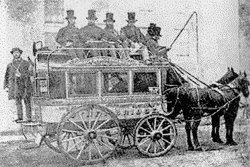
A
knifeboard omnibus.
|
|
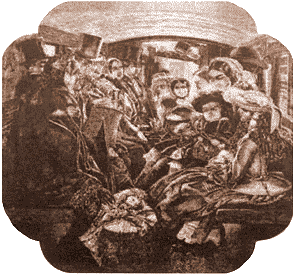
The crowded conditions inside an omnibus.
|
One can understand the reason for sitting on the top and exposed
to the elements if they did get overcrowded like this. By 1879
there were horse drawn trams, which must have been a great
improvement for the traveller.
On the 13th June, 1859 Thomas Worrall, the eldest son of Daniel
and Helen, married Mary Ann Rutter (our ancestors) in Holy
Trinity Church, Short Heath, Willenhall. |
|
At the time that Thomas and Mary Jane got married Holy Trinity
Church was new and quite a distance from Willenhall. The
question is - did they walk from Willenhall to Short Heath, or
did they travel by horse and carriage or a horse and pair? There
are no photographs to show us, but if they had used such
transport, the horses would have been decorated with ribbons.
Mary Ann Rutter was born on the 18th November, 1836 at Chapel
Green, Willenhall.
|
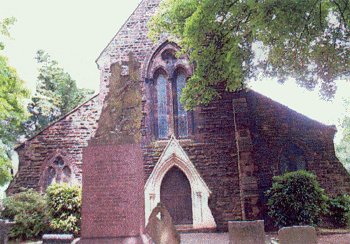
Holy Trinity Church, Short Heath, Willenhall. |
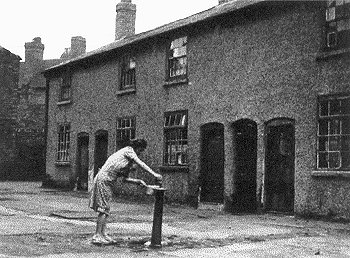 |
The picture shows Chapel Green in the 1950s before the houses were
demolished. They were typical of the houses in this area in the
nineteenth century. They did not have running water. There was a
stand-pipe in the yard for the inhabitants to collect water, and the
toilets were outside.
Her
parents were James Rutter and Elizabeth Gnosill. She was one of
eleven children. James Rutter, Mary Ann's father, was also
involved in the lock industry. |
|
He was a Key maker; a skill he would have learned from his father,
John, who had been a Key smith. James Rutter was a manufacturer
and is listed as a Key maker in White’s Directory of 1834. In
the Post Office Directory for 1868 he is listed as a key filer
in King Street. By 1861 James Rutter was living next door to
John Worrall and working as a Key Smith, and making keys for the
Worrall's locks. My early records show only the male members.
The reason for this is that they were easy to find, and although
it was my intention just to find my mother, Eliza Worrall's
ancestors, I couldn’t ignore the relations.
|

|
|

|
| Return to
the previous page |
|
Proceed to
the next page |
|